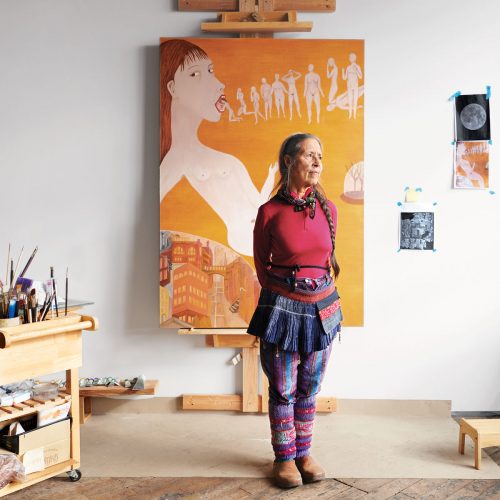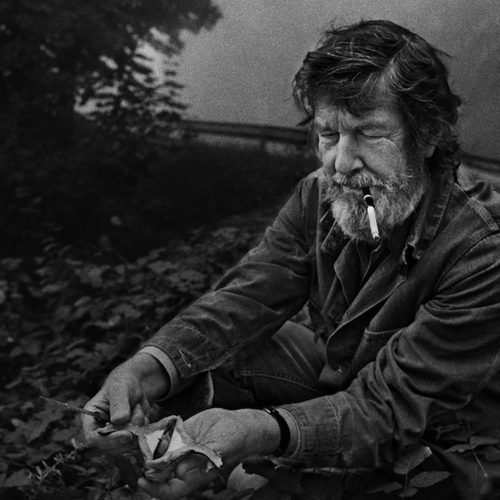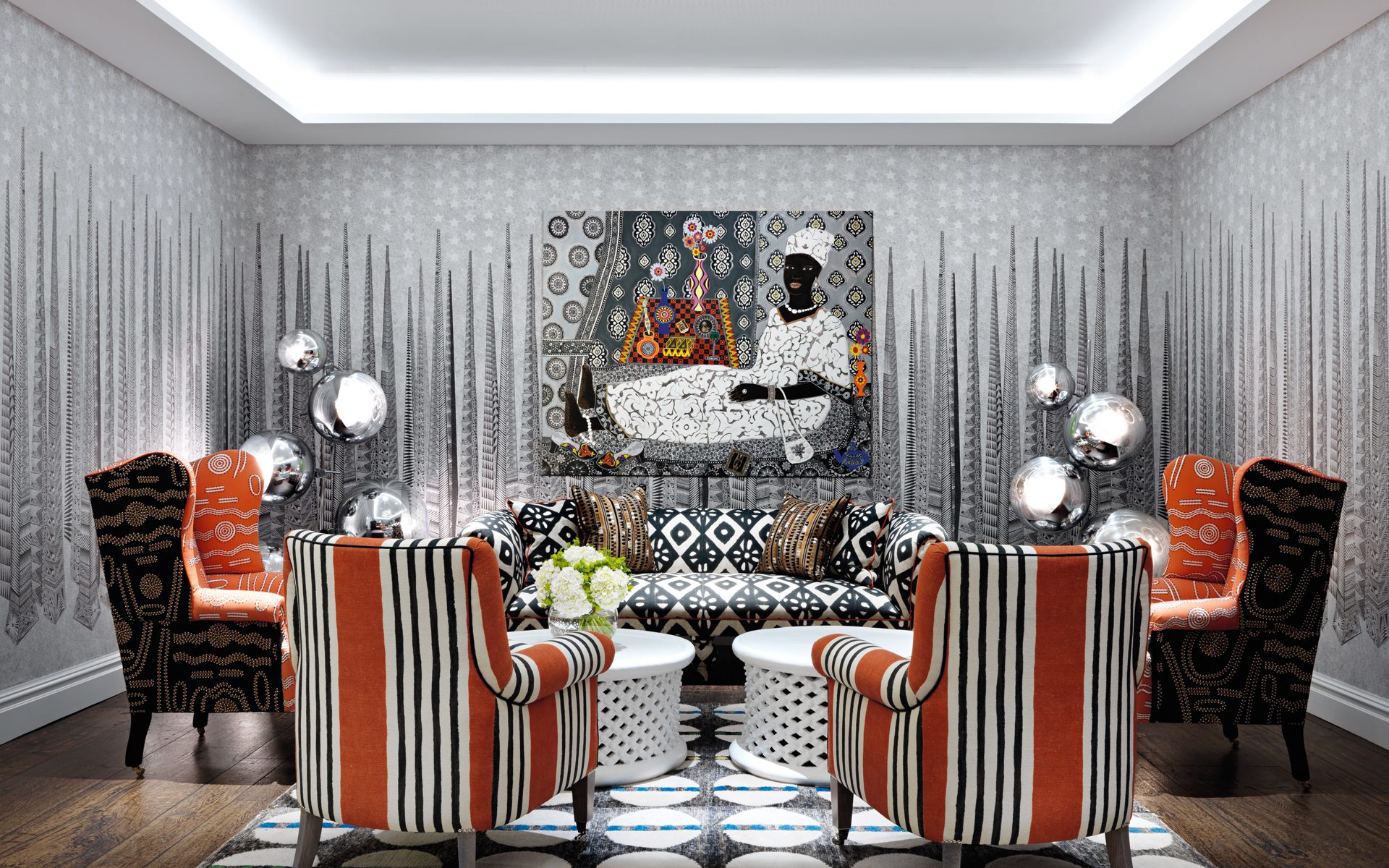

Inside Kit Kemp’s Whimsical Hotels
Acclaimed British designer and hotelier Kit Kemp talks about how art is the focus of her designs
I think about how a piece of art will look in an interior space all the time. Whether it’s a house or a hotel—it’s easier if you’re starting with a building that actually exists, rather than one that is still being built, because you know the space and it’s how you actually use the punctuation in that space as you move from one area to another. I like mixing old and new, because contemporary art is much brighter, as a rule, so that it can make a good contrast, from the neutrals in a room to something brighter on the wall that pushes you through to another space.
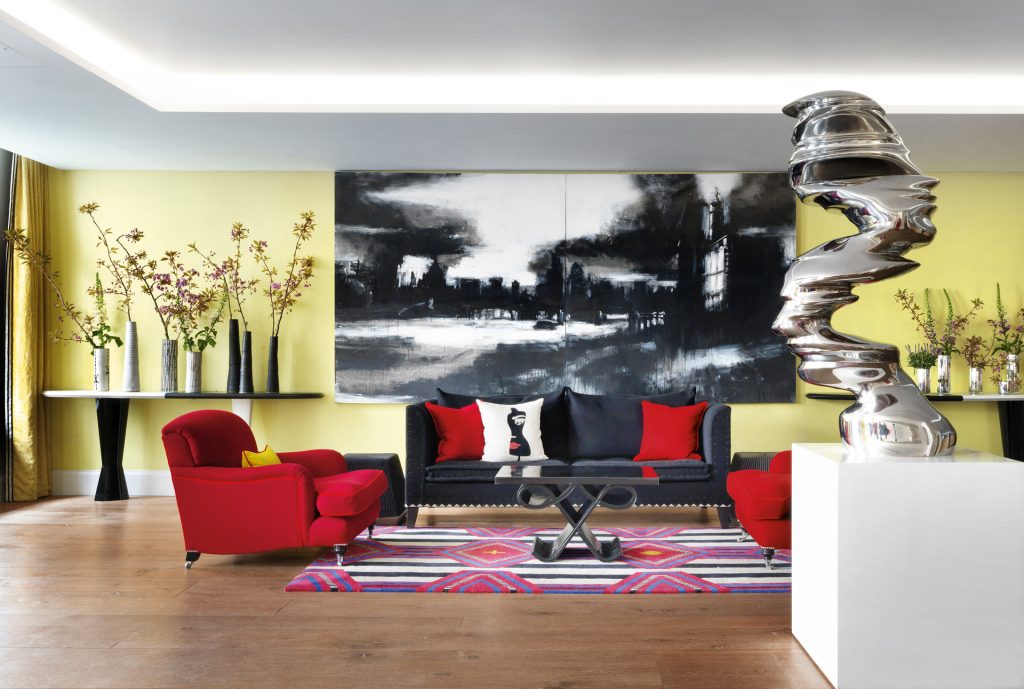
When I’m trying to get people to walk through an enfilade of rooms, especially if they are very unglamorous spaces, I make them more interesting by having art on the walls, particularly if it’s colorful or enticing. The pieces don’t need to relate to each other. I like every room to tell a story, but it doesn’t have to be the same story, especially if they are bedrooms in a hotel.
You can be saying something very different in the next room, but it can be linked, possibly with a color or a theme, or even just with a carpet. I love design, and the reason that I do it is that I love a lot of people’s work, so I am going to be influenced. I’m not a purist, and there will be certain things at certain times that take my interest and that I long to use, but as I’m naturally curious, things will change.
Recommended: Discover Kit Kemp’s Art-Filled Suite at Bergdorf Goodman
As a designer, you do have to have your own handwriting at the end of the day. Sometimes you can get too diverse, and when that happens, you have to go back to your core, and return to things that you’ve always loved. When you commission artists, as I do, I don’t think you can hold them in an armlock. They need to feel free, so you have to decide that you like somebody’s work, tell them about the space, and then give them free rein. I think that’s when you get the best work.
Most of the time, when I’m commissioning artists and craftsmen, my main thing is to get the best of their work, and that, in itself, is a talent—by talking to them, but at the same time, allowing them to use that part of their brain that gives them their freedom.
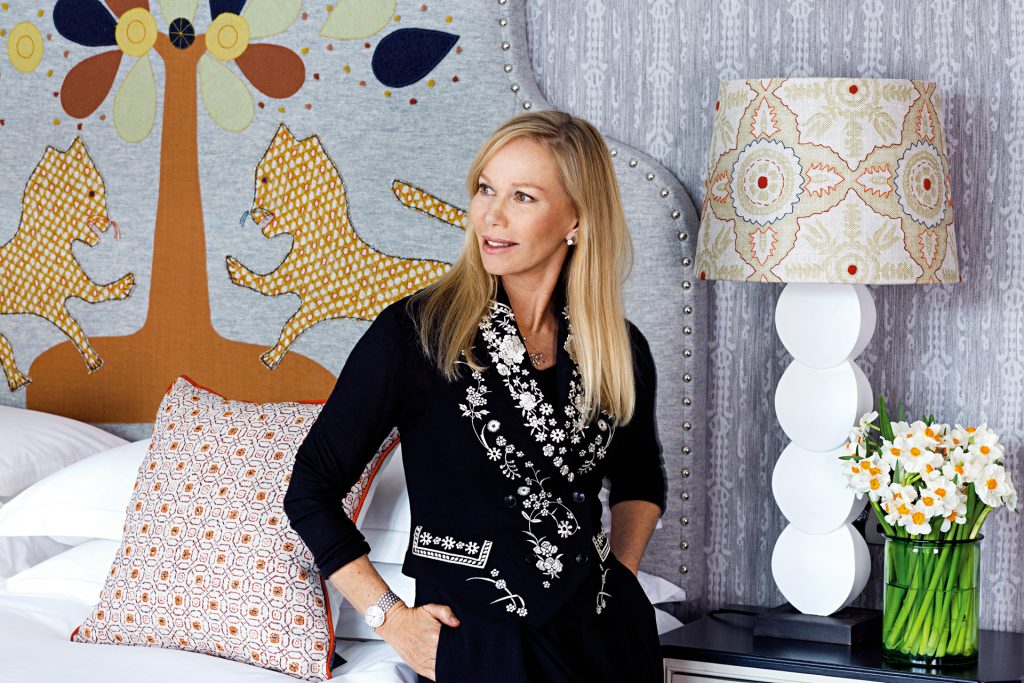
Often artists are not used to being commissioned, or working to a brief, and they can be quite difficult. Telling them that it’s got to go with a green carpet, and that I don’t like the color purple, that can be very tricky. I’ve been to rooms that have art in them, and where it runs into squillions of pounds, and yet they look terrible.
I do think you can have too many ideas in a room. It’s like a large oak tree: It needs space around it, so if you have a beautiful piece of art, let it breathe. If you have one really strong oil painting, don’t smother it with others, but use much lighter weight watercolors, or etchings, or drawings, or something from a different culture.
At the same time, I don’t want my public rooms to look like a gallery. It’s vitally important to have a sense of things working together in a room, in that it makes one feel more comfortable. Otherwise, you’ll be in a room where you don’t want to sit down. You might want to look at the art on the walls, but it doesn’t make you want to stay in it; and for me, I want to see people using the room, putting their feet up, showing their friends, and entertaining in it.
If you think that you know how a room will be in advance as an end product, then that’s not right, because interior design is an organic process, and there should be things evolving along the way, so that you have to think on your feet and be versatile.
A large piece of furniture or a painting that you feel is going to look marvelous on that wall, suddenly, when it comes in, doesn’t look quite right, so you have to be able to fiddle, and actually, that’s part of my joy of doing things. I love having to suddenly think again. It really puts me on my mettle, and gives me the element of surprise. I don’t think that rooms should be too predictable; there should always be some kind of quirkiness that makes you smile, or some strange scale that makes you think again, some color scheme that doesn’t quite match, but nearly does.
I don’t always have the luxury of three or six months to doodle around with things. So very often, we’re doing things from plans and elevations. That’s very different from the real thing. You can’t actually tell the amount of light that’s coming in, or the color it’s going to be. Some of your beiges will turn green, or pink. I love discovering new artists, and giving them the opportunity for their work to be seen. I’ve started a few artists off, and now, they have so many commissions, and their work is selling so well, that I can’t actually afford to use them. This is fabulous, because it means that people are loving what we’re doing, and then commissioning the artists themselves. That’s one of the most rewarding parts of using art in this way.

I sometimes wish that a gallery were more like a room, and they would commission furniture pieces like sofas and coffee tables to show with the art, so that you could see how it all works together. That’s where I’ve been so lucky with my artists—that their art is seen within a working space. If you think that a hotel takes about two or three years to complete, I have to build everything in the warehouse, and then it comes out and goes straight in. I don’t ever buy things just in case I might one day use them. I don’t have things hanging around and, as an artist, I would hate it if my things were languishing in a warehouse somewhere. I’d want them out there, being seen. I go to a lot of art fairs and art school graduation shows.
By talking to the artists, you can see how practical they are. I need to have someone who can work to a time schedule. At the moment, we are working on our second hotel in New York, The Whitby, which is due to open in February. But the building isn’t there yet. For this project, I’ve got quite a few African artists whose work I really like at the moment, and so I’m using quite strong African colors, too. We have to balance it all with something very adulterated and sophisticated so there’s a calm, and then there’s a hot.
So we also have English artists, like Eileen Cooper, whom we’re pushing a bit. I think that there are certain artists who have a lot to say, but haven’t had the opportunity before, so it’s really nice to do that for somebody. Then we have Joe Tilson. I’ve often followed his work, and we’ll have more of it on display there as well. I don’t borrow things because if they’re wonderful, I can’t bear to give them back. They’ve got to stay, especially as they are the essence of the place. I don’t believe in moving things around either. Once they’ve found their spot, that’s it.
As told to Stafford Cliff

